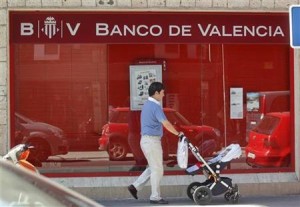Spain’s plans to restructure its four weakest banks have this week been approved by the European Commission, a move that clears the way for the beleaguered banks to receive almost €37bn in fresh eurozone bailout money. The four banks – Catalunya Banc, NCG Banco, BFA-Bankia and Banco de Valencia – were nationalised a couple of years ago following the deflation of Spain’s property bubble, a move that saved them from extinction but saddled them with huge losses lingering on their loan books. Banco de Valencia is due to be sold to CaixaBank, while it is hoped that the other three will be able to become viable in the long term by 2017. The news will help stabilise Spain’s nervy economy, and should help satisfy credit rating agencies that the country is on the right road to recovery. However, independent stress tests earlier in the year found that the Spanish banking sector still had a shortfall of approximately €59bn, although the country’s eurozone partners have agreed to a €100bn bailout once Spain’s restructuring plans are approved. As part of the restructuring, the four struggling banks will be prohibited from lending within the real estate sector, with any real estate assets currently owned by the banks being transferred to an asset management company. Such a move could have positive ramifications for the Spanish property industry, injecting added confidence into the market by ringfencing the activities and assets of the ‘bad banks’. The International Monetary Fund (IMF) predicts that this nationwide buy-up of toxic real estate assets will likely lead to lower property prices throughout Spain. The IMF has also praised Spain’s efforts to emerge from its most recent banking crisis, but has warned that the restructuring process will be lengthy. “Although the outlook remains broadly consistent with the baseline scenario used in the bank stress tests, risks around the baseline remain,” the IMF said.
Would you like to find the property that's perfect for you?
 en
en




 Vlaams-Nederlands
Vlaams-Nederlands
0 Comments
Leave a Comment
DISCLAIMER
The opinions and comments expressed by contributors to this Blog are theirs alone and do not necessarily reflect the views of VIVA Homes Under the Sun Ltd, any of its associated companies, or employees; nor is VIVA to be held responsible or accountable for the accuracy of any of the information supplied.
Have you got something to say?